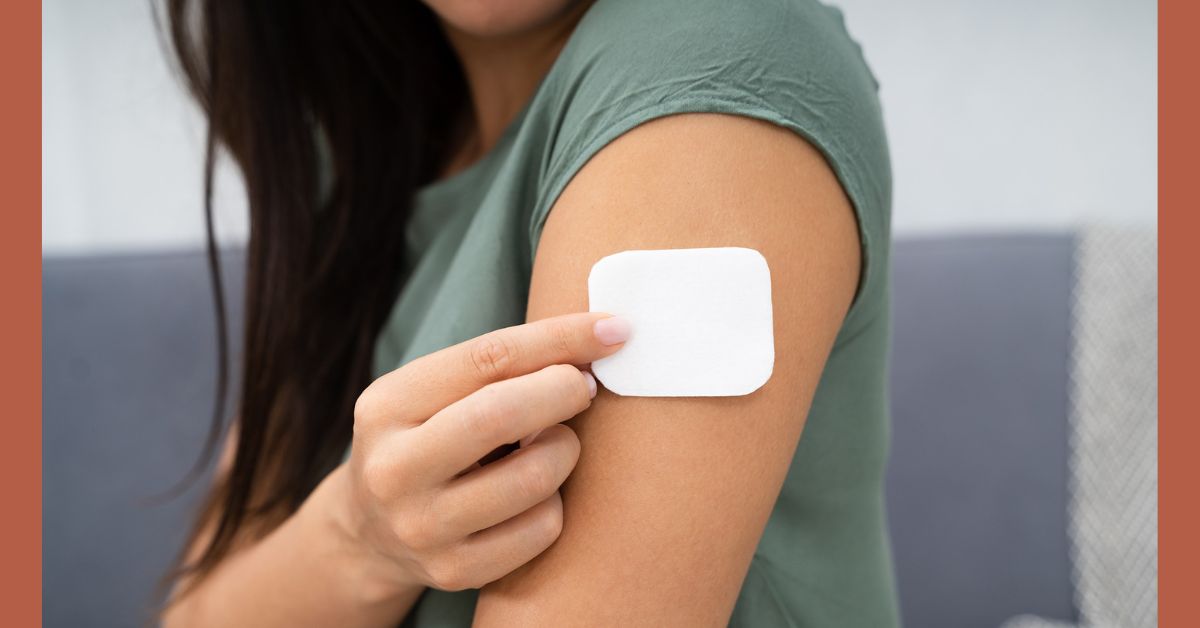For women undergoing hormone replacement therapy, the estrogen patch is a popular treatment option. This article delves into what estrogen patches are, their benefits, how they are used, and what you should know about them. Whether you’re exploring personal health options or gaining knowledge on the subject, read on to discover detailed insights about estrogen patches.
What Is an Estrogen Patch?
An estrogen patch is a small, adhesive patch that releases estrogen into the bloodstream through the skin. It is used primarily in hormone replacement therapy (HRT) to alleviate symptoms associated with menopause such as hot flashes, night sweats, and vaginal dryness. Unlike oral medications, estrogen patches offer a steady release of hormones, which can result in more consistent symptom management and fewer side effects.
Benefits of Using Estrogen Patches
Estrogen patches offer numerous benefits for those undergoing HRT. One key advantage is the method of delivery. Since the estrogen is absorbed through the skin, it bypasses the liver, reducing the risk of liver-related side effects often associated with oral estrogen. Moreover, research suggests that estrogen patches may have a lower risk of clotting compared to oral estrogen. This makes them a safer option for women concerned about cardiovascular risks.
Consistent Hormone Levels
The steady release of hormones delivered by an estrogen patch helps maintain consistent estrogen levels throughout the day. This can lead to a reduction in mood swings and other fluctuating symptoms that accompany hormone imbalances.
User Convenience
For many, the convenience of using an estrogen patch cannot be overstated. Typically, patches are changed once or twice a week, allowing users to incorporate it easily into their routine without the need for daily medication.
How to Use an Estrogen Patch
Applying an estrogen patch is straightforward. It should be placed on clean, dry skin, usually on the lower abdomen or buttocks. It’s important to avoid putting the patch on the breasts or any areas where the skin is irritated. Each patch lasts several days, depending on the specific product instructions, after which it should be replaced with a new one.
Steps to Apply an Estrogen Patch
- Wash and dry your hands thoroughly.
- Open the patch packaging and remove any protective liner.
- Apply the patch to the chosen area, pressing down firmly for about 10 seconds to ensure adhesion.
- Wash your hands again after handling the patch.
Potential Side Effects
While estrogen patches are generally safe for many women, they can cause side effects. Common side effects include skin irritation at the application site, headaches, and nausea. In rare cases, more serious side effects might occur, such as changes in vaginal bleeding or signs of a blood clot. It’s crucial to discuss any concerns or unusual symptoms with a healthcare provider to ensure the treatment remains appropriate for your needs.
Consulting with Your Healthcare Provider
Prior to starting any hormone replacement therapy, a thorough consultation with your healthcare provider is essential. They can offer guidance on the best treatment options based on your medical history and specific health needs. Regular follow-ups will also allow for any necessary adjustments to your therapy plan.
By understanding the various aspects of estrogen patches, their uses, and potential side effects, individuals can make informed decisions about their hormonal health. With the right guidance and treatment plan, estrogen patches can significantly enhance quality of life for those experiencing menopausal symptoms.
Also Read: The Immediate X2 ProAir: Revolutionizing Respiratory Care

